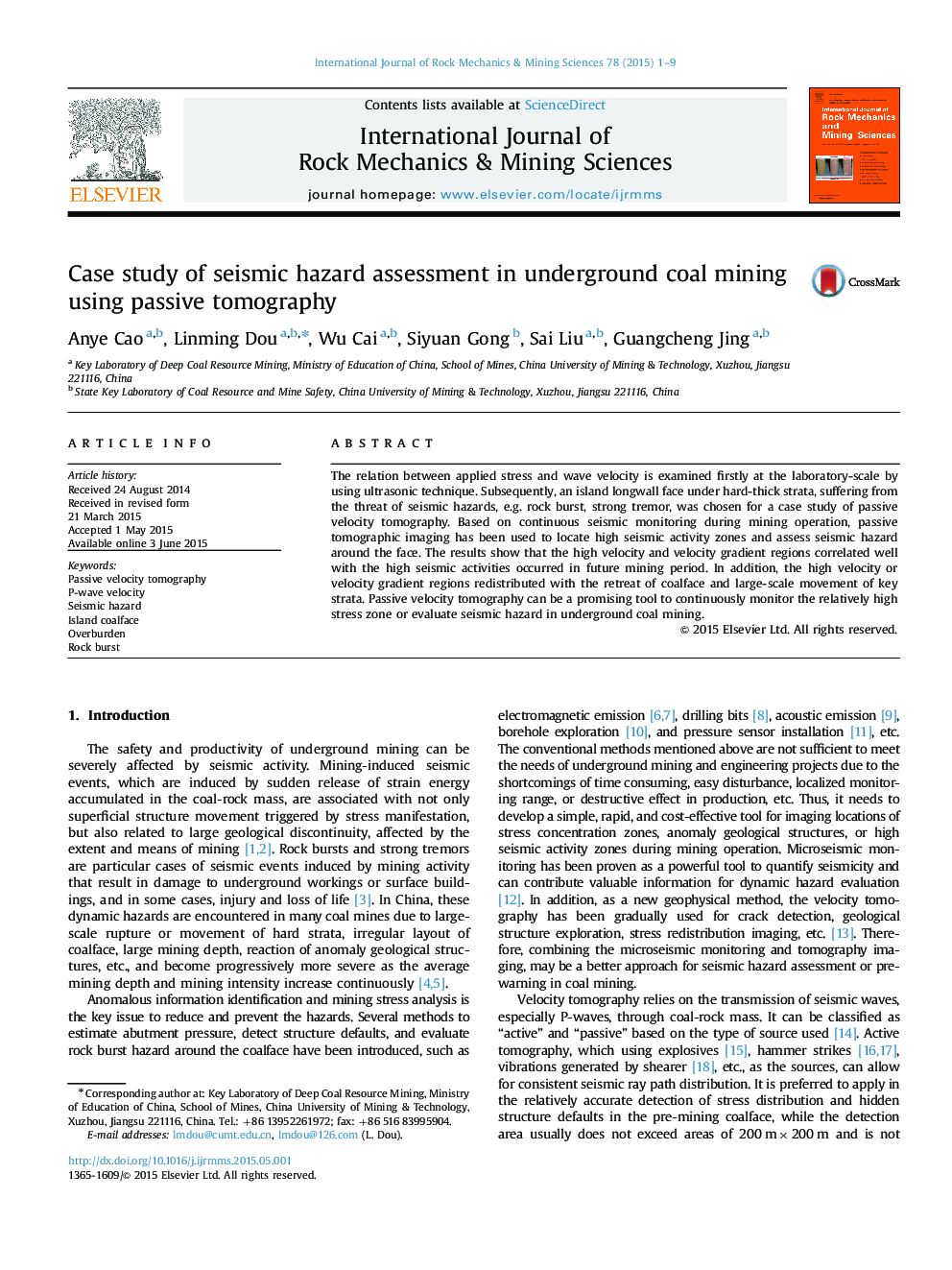| Article ID | Journal | Published Year | Pages | File Type |
|---|---|---|---|---|
| 809388 | International Journal of Rock Mechanics and Mining Sciences | 2015 | 9 Pages |
•Relation between ultrasonic velocity and applied stress was conducted at the laboratory-scale.•Overburden fracturing structure of the island coalface was simply analyzed.•Passive velocity tomograms during coalface mining were applied at the field-scale.•Tomographic velocity and velocity gradient plots were used to target areas for de-stressing, and the subsequent action to successfully de-stress the coal seam.
The relation between applied stress and wave velocity is examined firstly at the laboratory-scale by using ultrasonic technique. Subsequently, an island longwall face under hard-thick strata, suffering from the threat of seismic hazards, e.g. rock burst, strong tremor, was chosen for a case study of passive velocity tomography. Based on continuous seismic monitoring during mining operation, passive tomographic imaging has been used to locate high seismic activity zones and assess seismic hazard around the face. The results show that the high velocity and velocity gradient regions correlated well with the high seismic activities occurred in future mining period. In addition, the high velocity or velocity gradient regions redistributed with the retreat of coalface and large-scale movement of key strata. Passive velocity tomography can be a promising tool to continuously monitor the relatively high stress zone or evaluate seismic hazard in underground coal mining.
